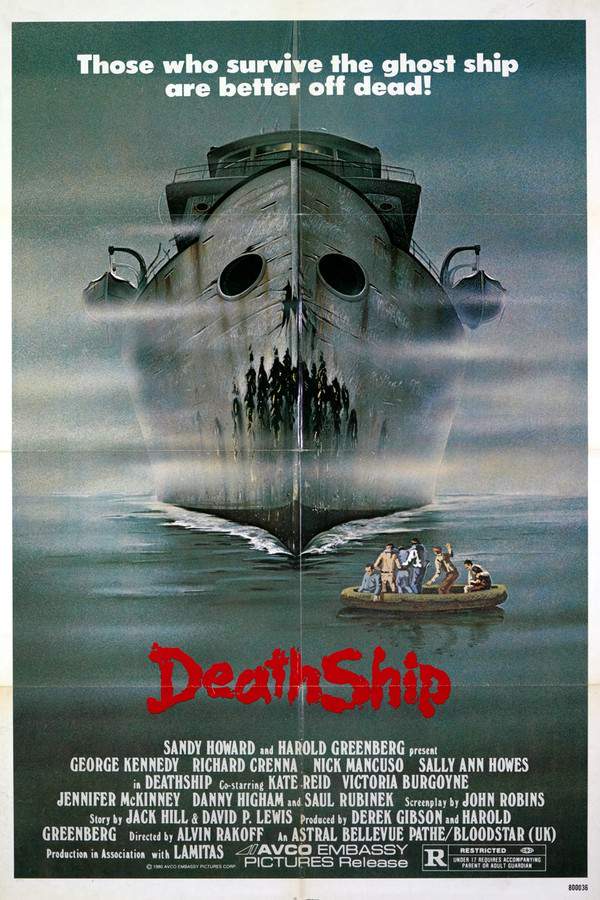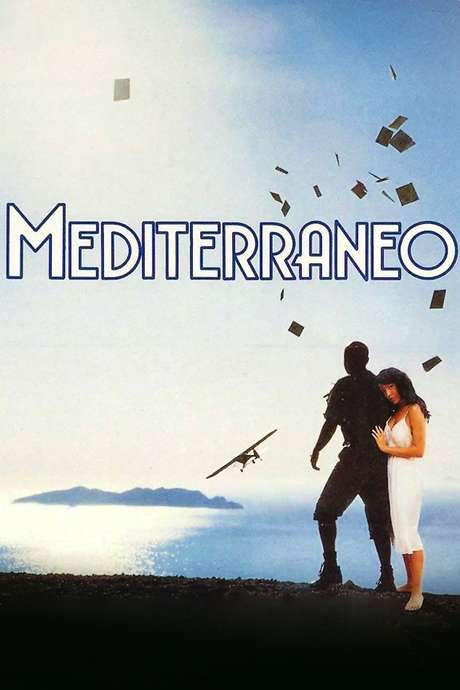
And the Ship Sails On
Year: 1983
Runtime: 128 mins
Language: Italian
Director: Federico Fellini
Set in 1914, a cruise departs from Naples to scatter the ashes of beloved opera singer Edmea Tetua near Erimo, her birthplace. Among the eclectic passengers, a group of Serbian refugees is found aboard. Peace holds until an Austrian warship attacks, forcing the Serbians onto an enemy ship. They resist, sparking a brief battle that ends in destruction.
Warning: spoilers below!
Haven’t seen And the Ship Sails On yet? This summary contains major spoilers. Bookmark the page, watch the movie, and come back for the full breakdown. If you're ready, scroll on and relive the story!
And the Ship Sails On (1983) – Full Plot Summary & Ending Explained
Read the complete plot breakdown of And the Ship Sails On (1983), including all key story events, major twists, and the ending explained in detail. Discover what really happened—and what it all means.
The film opens in July 1914 with a quiet, sepia-toned scene at Naples Harbor, just before the cruise ship Gloria N. slips away. The visual shift from silent projection to living color marks the moment when dialogue returns and the ship becomes a moving stage for a sprawling, Fellini-like panorama. On board, Freddie Jones as Orlando—the Italian journalist who narrates directly to the camera—explains that this voyage is no ordinary trip. It is a funeral procession meant to scatter the ashes of the beloved opera singer Edmea Tetua, near her birthplace on the island of Erimo.
Edmea Tetua, Janet Suzman, is celebrated in legend as the greatest singer of all time, her voice described in godlike terms that seem almost mythical. The narration sprinkles the voyage with sly, gossip-fueled humor about a parade of fantastical caricatures—opera singers, voice teachers, orchestra directors, theatre producers, actors, prime ministers, counts, princesses, grand dukes, and fans driven to feverish devotion. The ship becomes a floating gallery of personalities and pretensions, each figure longing for a moment in Edmea’s shadow.
A jealous and brazen soprano, Franca Maresa as Ildebranda, presses to uncover the secret of Edmea’s incomparable voice, while a bristle-haired Russian basso wanders the mess hall and hypnotizes a chicken with nothing but his voice. A curly-cued actor travels with his mother in a comical bid to charm sailors, and Peter Cellier as Sir Reginald Dongby, a voyeuristic English aristocrat, revels in watching his wife, Lady Violet. The ship’s social ladder is further complicated by the Grand Duke of Harzock—a portly, almost boyish aristocrat—whose blind sister, the dancer Pina Bausch, plots with her lover, the prime minister, to disinherit him. Meanwhile, the brooding Count of Bassano retreats to his cabin, which he has converted into a temple in memory of the diva.
A dreaded stench erupts from the hold and reveals a neglected rhinoceros, a misfit beast that must be washed and returned to the hold with water and hay, a surreal hiccup in the glamorous pageantry. On the ship’s third day, a crowd of shipwrecked Serbians appears on deck, refugees rescued and sheltered just long enough to be brought toward Italy. The Grand Duke and his entourage mistake the Serbians for terrorists and order the captain to segregate them, while the captain agrees to disperse Edmea’s ashes at Erimo first.
As the ceremony concludes, refugees are moved to lifeboats; a bomb hurled by a youthful Serbian screams through panic, and the Austro-Hungarian flagship answers with cannon fire. The Gloria N. sinks amid chaos: Albertini, conducted by Paolo Paoloni as Il Maestro Albertini, leads the musicians in a desperate, cinematic effort, the grand piano sliding across the deck and mirrors shattering as suitcases drift through flooded corridors. The workers behind the scenes reveal a grand mechanical ballet—giant hydraulic jacks, acres of plastic sea, and an army of technicians stoking smoke and fire effects—while an enigmatic figure, perhaps Orlando or Fellini himself, watches the chaos unfold.
The camera returns to a final, intimate image: Orlando in a lifeboat, the rhinoceros happily nibbling on hay beside him. In a rustic, almost deadpan aside, he confides, > Did you know, that a rhinoceros gives very good milk? <
This closing beat loops back to the voyage’s core illusion: what began as a ceremonial race through theatrical excess ends with a playful, self-referential wink. The film uses the spectacle of the sinking Gloria N. to question the difference between performance and catastrophe, and to remind the audience that what they are watching is as much a production behind the camera as it is a story on the deck. The ostentatious pageantry, the political infighting, the surreal comic touches, and the dreamlike absorption in Edmea Tetua’s legend all fold into a single, strange voyage that leaves viewers with a lingering mix of amusement, awe, and reflection.
Last Updated: October 09, 2025 at 14:28
Unlock the Full Story of And the Ship Sails On
Don't stop at just watching — explore And the Ship Sails On in full detail. From the complete plot summary and scene-by-scene timeline to character breakdowns, thematic analysis, and a deep dive into the ending — every page helps you truly understand what And the Ship Sails On is all about. Plus, discover what's next after the movie.
And the Ship Sails On Timeline
Track the full timeline of And the Ship Sails On with every major event arranged chronologically. Perfect for decoding non-linear storytelling, flashbacks, or parallel narratives with a clear scene-by-scene breakdown.

Similar Movies to And the Ship Sails On
Discover movies like And the Ship Sails On that share similar genres, themes, and storytelling elements. Whether you’re drawn to the atmosphere, character arcs, or plot structure, these curated recommendations will help you explore more films you’ll love.
Explore More About Movie And the Ship Sails On
And the Ship Sails On (1983) Scene-by-Scene Movie Timeline
And the Ship Sails On (1983) Movie Characters, Themes & Settings
And the Ship Sails On (1983) Spoiler-Free Summary & Key Flow
Movies Like And the Ship Sails On – Similar Titles You’ll Enjoy
Death Ship (1980) Film Overview & Timeline
Mediterraneo (1991) Complete Plot Breakdown
Dark Eyes (1987) Movie Recap & Themes
The Long Voyage Home (1940) Full Movie Breakdown
Death in Venice (1971) Story Summary & Characters
The Ship That Died of Shame (1955) Plot Summary & Ending Explained
On Board (1998) Complete Plot Breakdown
Until the Ship Sails (1966) Story Summary & Characters
Abandon Ship (1957) Complete Plot Breakdown
The Ship (1921) Complete Plot Breakdown
Seas Beneath (1931) Movie Recap & Themes
Ship of Fools (1965) Complete Plot Breakdown
Ship of the Dead (1959) Spoiler-Packed Plot Recap
Between Two Worlds (1944) Ending Explained & Film Insights
L’Avventura (1960) Full Movie Breakdown

















